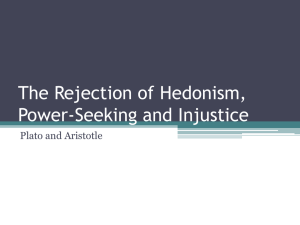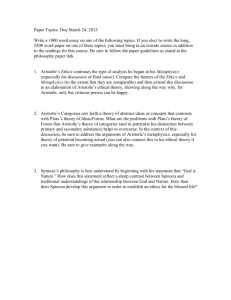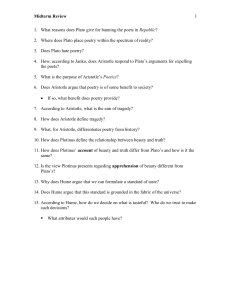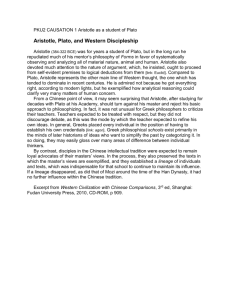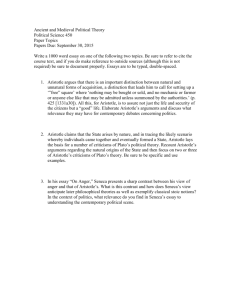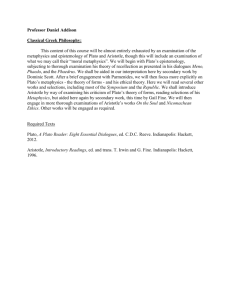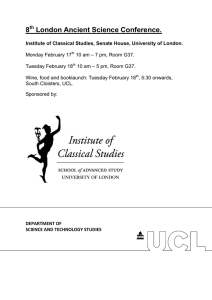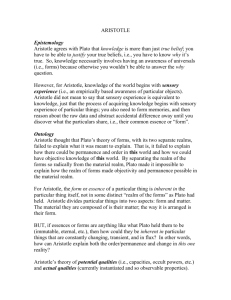Art and Aesthetics
advertisement
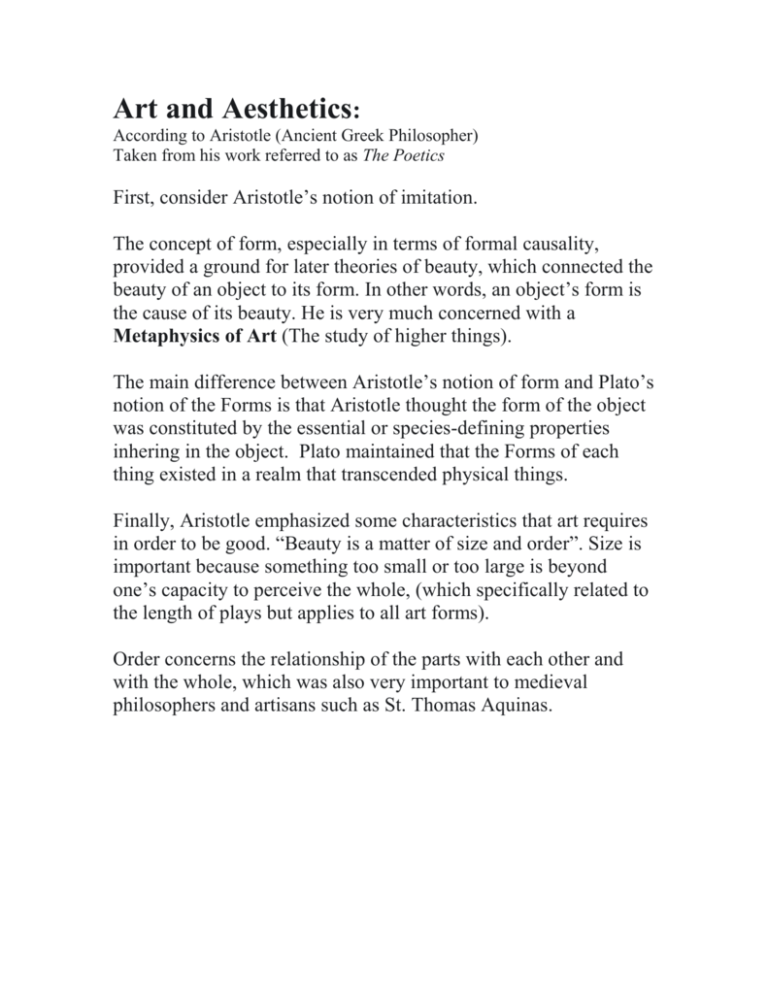
Art and Aesthetics: According to Aristotle (Ancient Greek Philosopher) Taken from his work referred to as The Poetics First, consider Aristotle’s notion of imitation. The concept of form, especially in terms of formal causality, provided a ground for later theories of beauty, which connected the beauty of an object to its form. In other words, an object’s form is the cause of its beauty. He is very much concerned with a Metaphysics of Art (The study of higher things). The main difference between Aristotle’s notion of form and Plato’s notion of the Forms is that Aristotle thought the form of the object was constituted by the essential or species-defining properties inhering in the object. Plato maintained that the Forms of each thing existed in a realm that transcended physical things. Finally, Aristotle emphasized some characteristics that art requires in order to be good. “Beauty is a matter of size and order”. Size is important because something too small or too large is beyond one’s capacity to perceive the whole, (which specifically related to the length of plays but applies to all art forms). Order concerns the relationship of the parts with each other and with the whole, which was also very important to medieval philosophers and artisans such as St. Thomas Aquinas.
